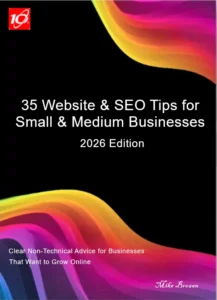Many of my clients are small businesses, micro businesses and sole traders. One of the characteristics of such businesses, especially at start-up time, is that they see the need for a website but tend to regard it as an expense rather than an investment.
This kind of thinking is understandable at a time when a business is faced with all kinds of costs just the get off the ground. I always argue that it is wrong not to treat a website as an investment. So what do I advise?
The secret is to ensure that the website is designed to be expandable – to grow as the business grows. Whether it’s a one page site or six page site at start up, it should be developed using a content management platform. This allows new pages to be added easily without redesigning the site each time something needs to be added.
Even the look of the site, can easily be changed without major redesign. Fashions in website design change quite quickly. Sites developed on top of a content management platform, such as WordPress, can easily have the entire look changed without affecting the basic content of the site.
The other thing I advise when, the site is initially set up, is to include a blog where you, the site owner, can add new postings yourself. This allows you to add content to the site yourself without costing anything other than your time.
Many people balk at the idea of writing posts or articles for a blog. What to include? Previous blog posts I’ve written can give you advice here but, in summary:
- Write about your field of business; advice, hints and tips.
- Write about problems that users of your products and services may experience
- Write about frequently asked questions that your customers may have
- New product announcements.
- Post some examples of your work.
- Post case studies.
What you shouldn’t put on your blog are posts that blatantly advertise your products or services. That will turn people off faster than anything else.
Follow my advice and a small business can start with a small website, for limited cost, and then add content to it, expand it, ad restructure it as the business grows.



